In the first part of “Rare pictures of Hanoi in the 20th Century” I have posted rare color / BW pictures of Hanoi from the beginning of the 20th century to the end of Indochina war (1954). In this 2nd part I will post rare pictures of Hanoi in time of American war. These photos will remind you of a painful but heroic Hanoi in the past. It is also a history lesson that makes you feel proud of Hanoi, arouse your love for Hanoi.
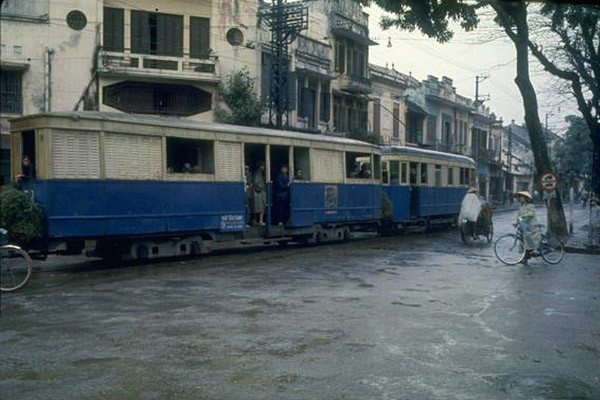
Dilapidated streetcars running in downtown Hanoi. (Corner of Avenue Puginier and Rue du Coton in 1936, now Dien Bien Phu – Hang Bong, next to Cua Nam flower garden)
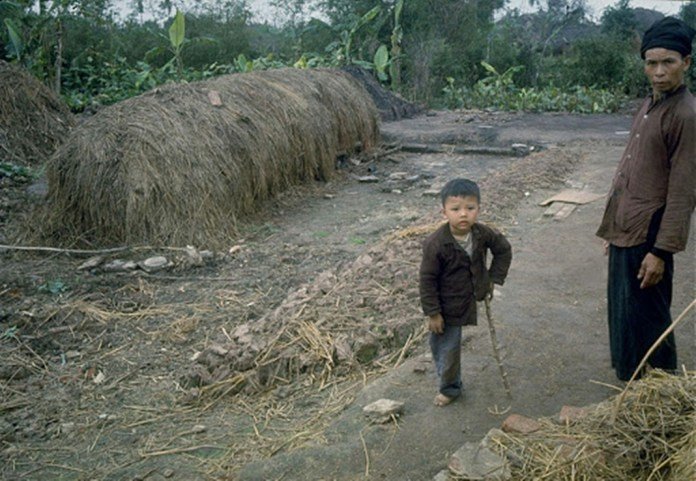
Young North Vietnamese boy w. one leg, a casualty of bombing attack, standing w. his father in middle of road gripping stick as crutch.
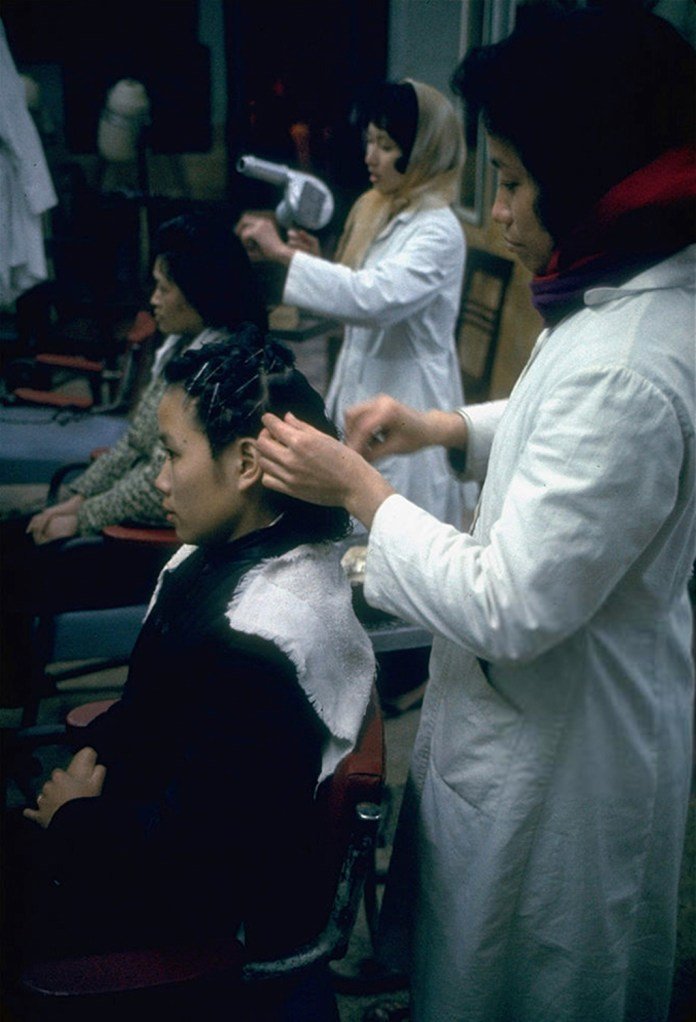
Ladies getting hair done in Hanoi beauty salon.
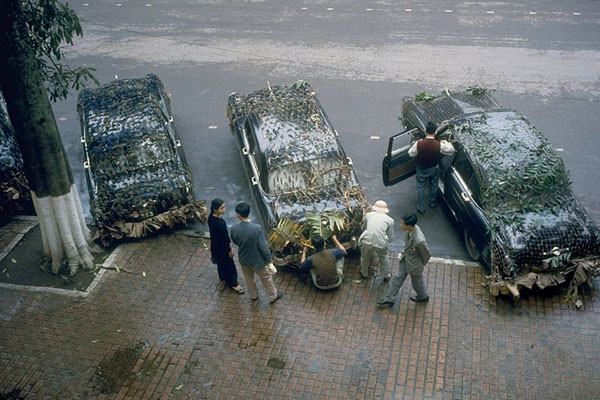
Cuban delegation in Hanoi leaving for south in camouflaged cars, the standard fashion for countryside travel.
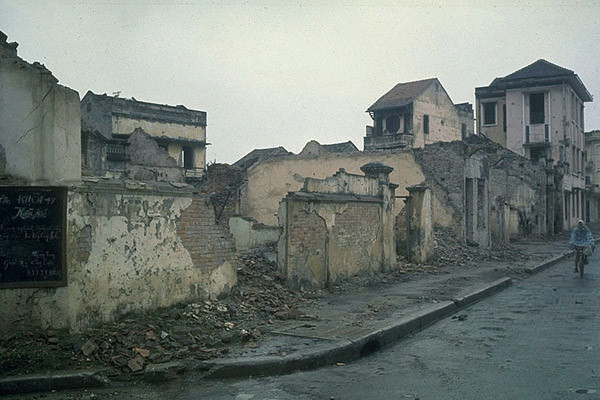
The corner of Nguyen Truong To and Nguyen Bieu streets, close to the Yen Phu power plant in Hanoi, was a key US bombing point in 1967 and 1972. Not far from that was the 100 mm anti-tank gun battlefield of Truc Bach Lake, Colonel McCaine falls on October 26, 1967.

Documents belonging to captured US Air Force flyers and plane parts collected by No. Vietnamese as documentary evidence. (Photo by Lee Lockwood/The LIFE Images Collection/Getty Images)
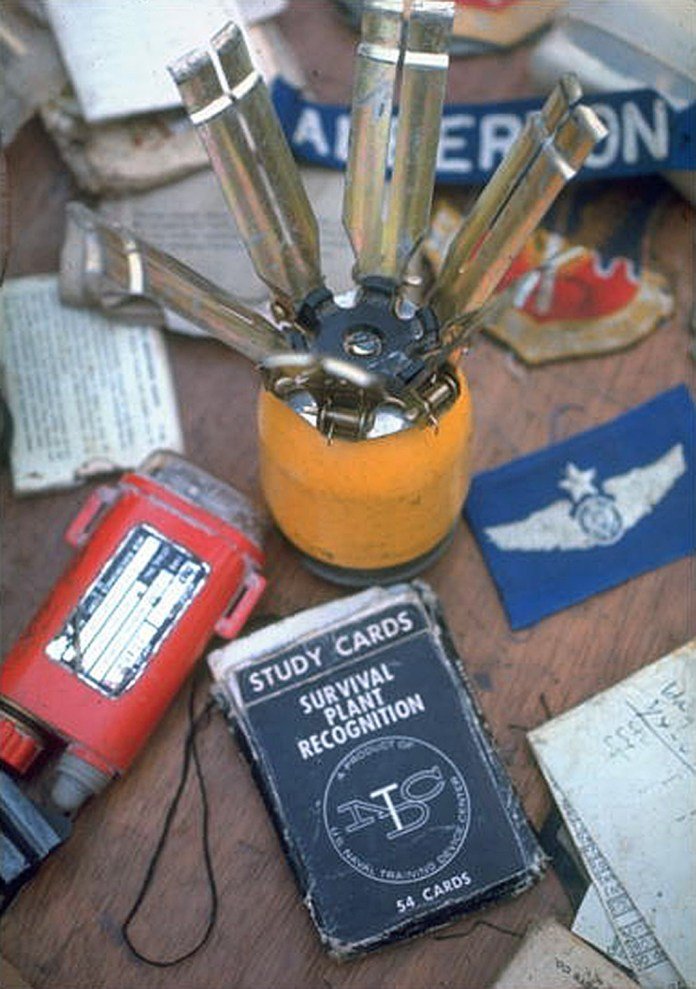
Documents belonging to captured US Air Force flyers and plane parts collected by No. Vietnamese as documentary evidence. (Photo by Lee Lockwood/The LIFE Images Collection/Getty Images)
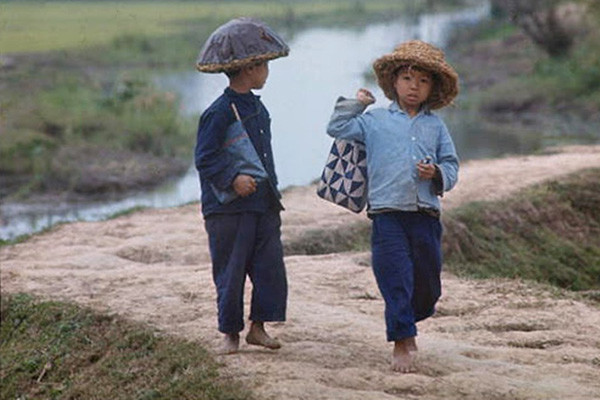
Bare-foot Vietnamese children walking to school. (Photo by Lee Lockwood/The LIFE Images Collection/Getty Images)
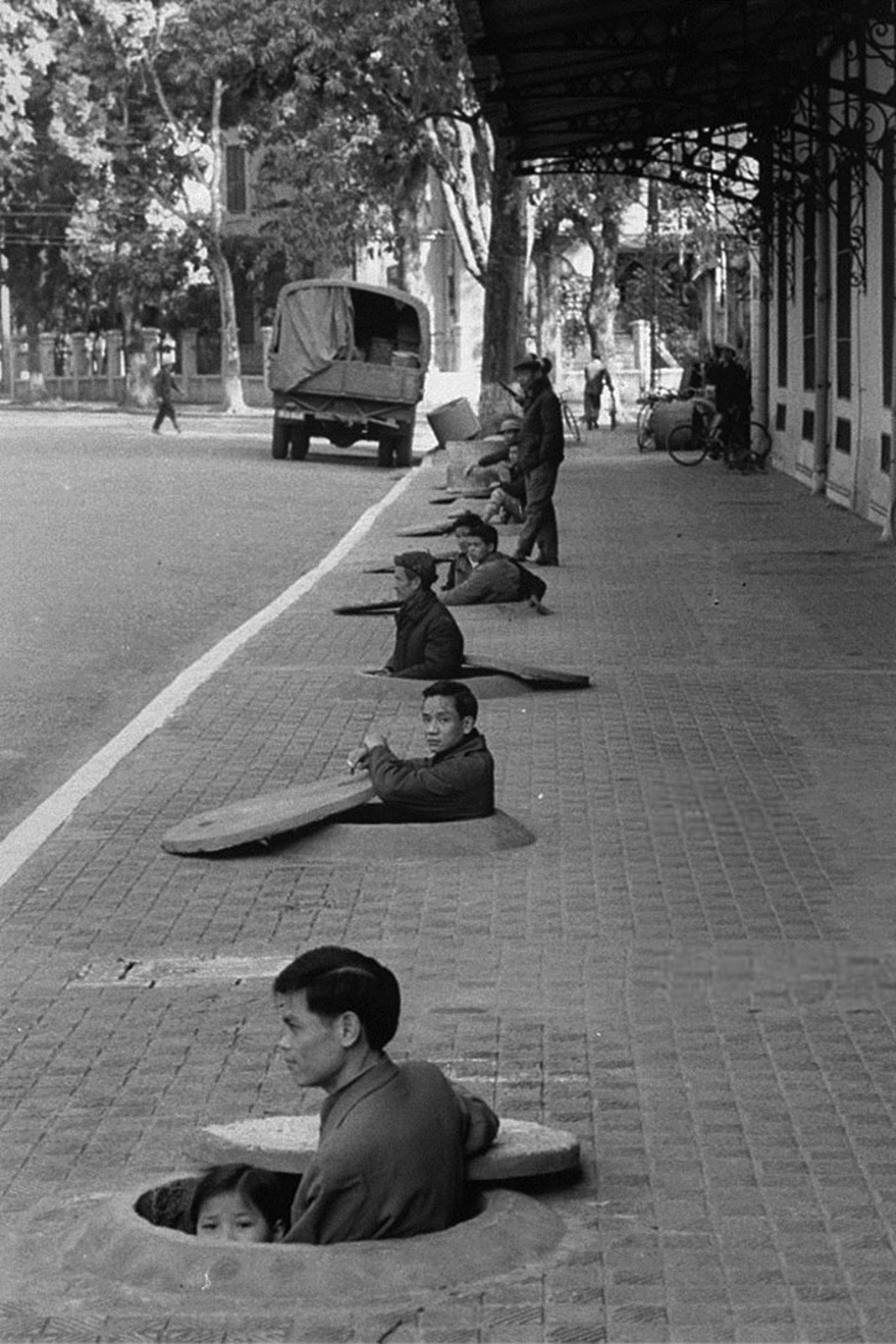
Hanoi residents waiting for all-clear siren in sidewalk manhole shelters during air-raid alert. (Photo by Lee Lockwood/The LIFE Images Collection/Getty Images)
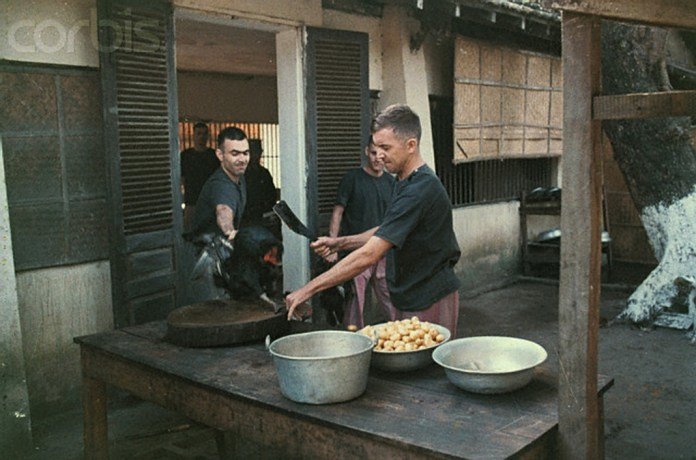
25 Dec 1968, North Vietnam – Somewhere in North Vietnam: U.S.A.F. Lt. Loren Harvey Torkelson, right, kills Christmas Turkey in North Vietnamese prisoner of war camp as U.S.A.F. Lt. Joseph Grecca looks on, Christmas day 1968. This color photo of American Prisoners was obtained from Japanese sources and North Vietnamese communists would not say where the prisoner of war camp was located. — Image by © Bettmann/CORBIS
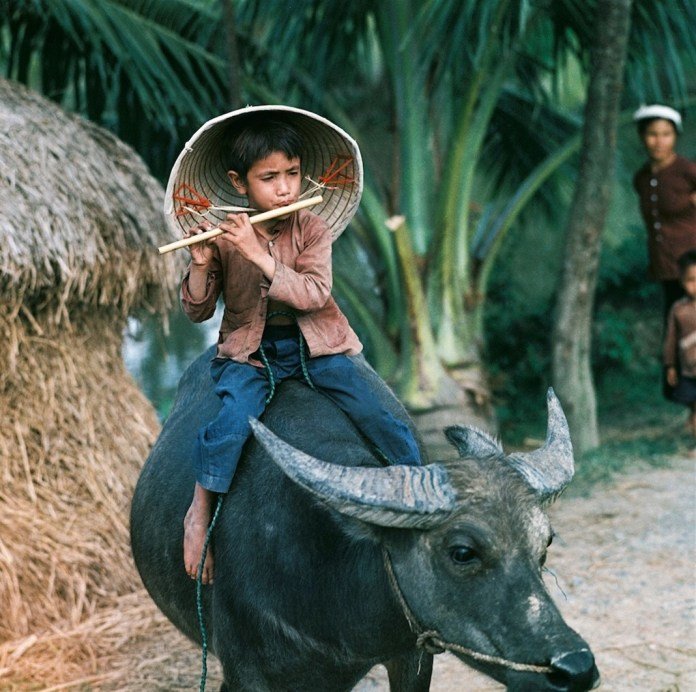
Somewhere in North Vietnam 1969
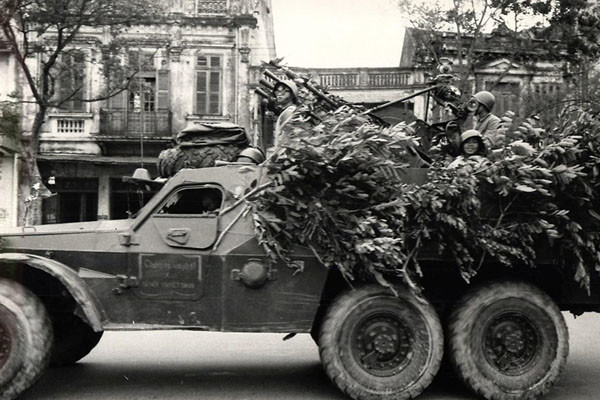
A army car on the street in Hanoi. Photo: Lee Lockwood / Black Star
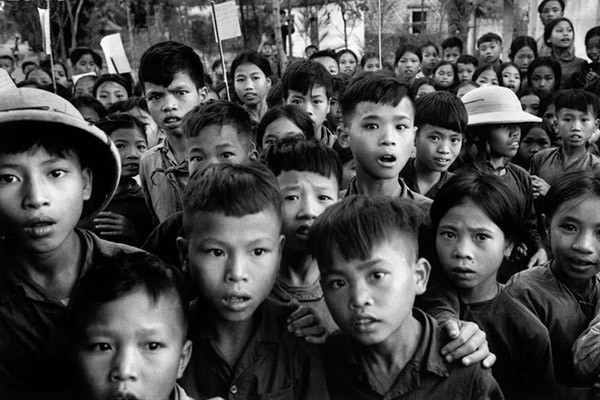
first time to see foreigners in person
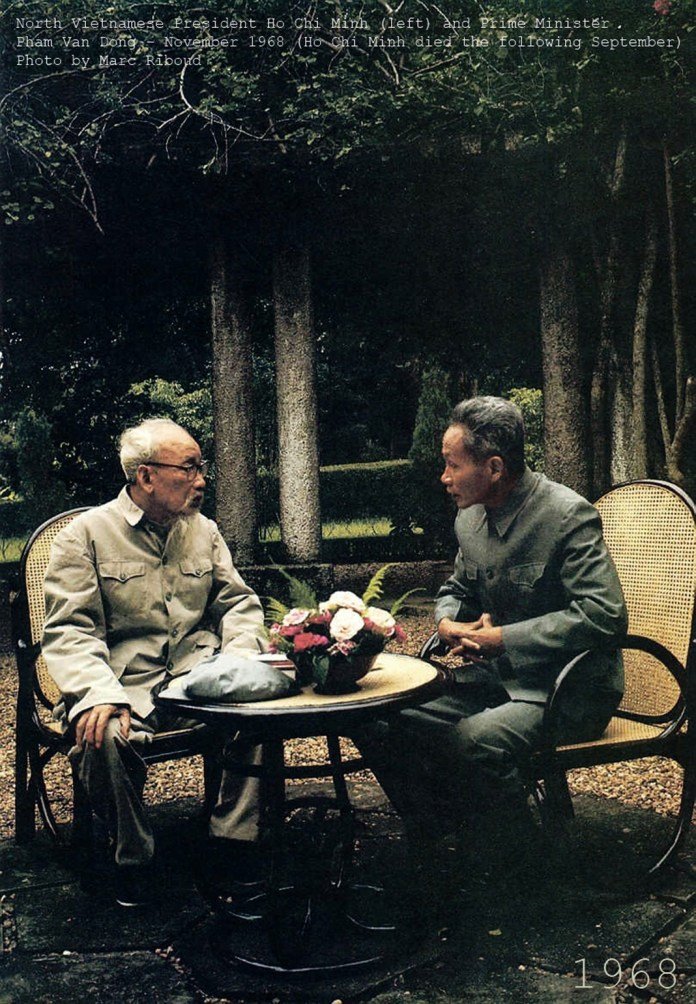
President of North Vietnam Ho Chi Minh and Prime Minister Pham Van Dong, taken at the Presidential Garden in November 1968. Photo by Marc Riboud
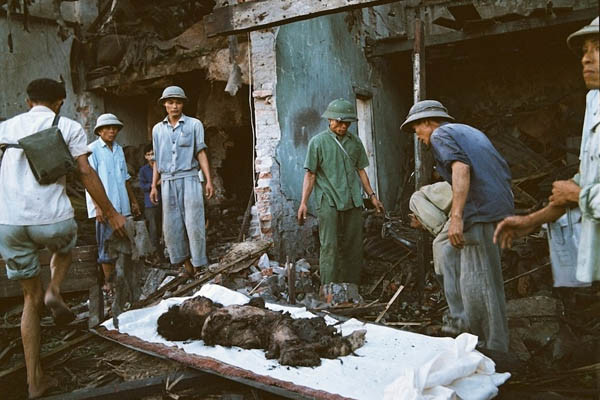
Northern Vietnam 1972. Photo by Thomas Billhardt

Northern Vietnam 1972. Photo by Thomas Billhardt
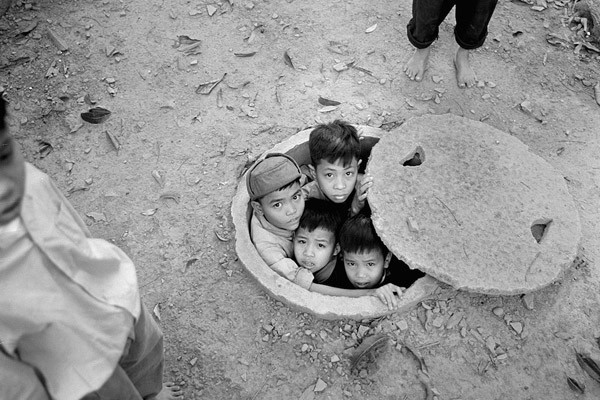
Northern Vietnam 1972. Photo by Thomas Billhardt

North Vietnam in American war
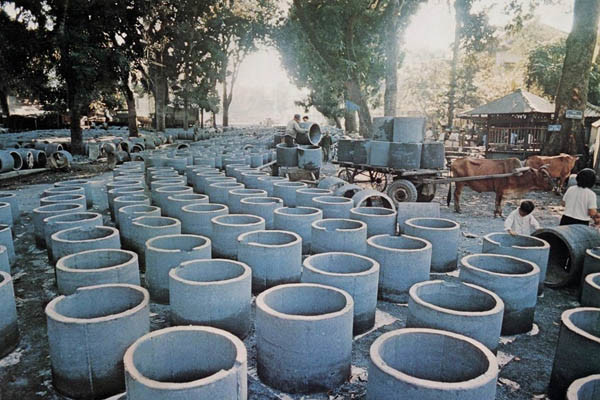
Hanoi 1972 – Production of individual bomb shelters.

Hanoi 1972 – Bomb pit in Bach Mai hospital yard.
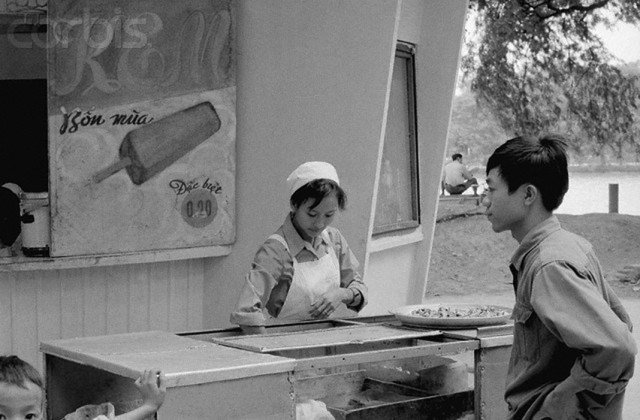
24 Nov 1973, Hanoi, North Vietnam — Hanoi: Hanoi Eskimo Pies. A woman vendor sells ice cream from a stand at the “Lake of the Restored Sword” in Hanoi. American antiwar activist Cora Weiss, who has recently returned from a visit to North Vietnam and Viet Cong held territories in South Vietnam, says the people there have a sense that they are building a new society out of the ruins of the war. — Image by © Bettmann/CORBIS
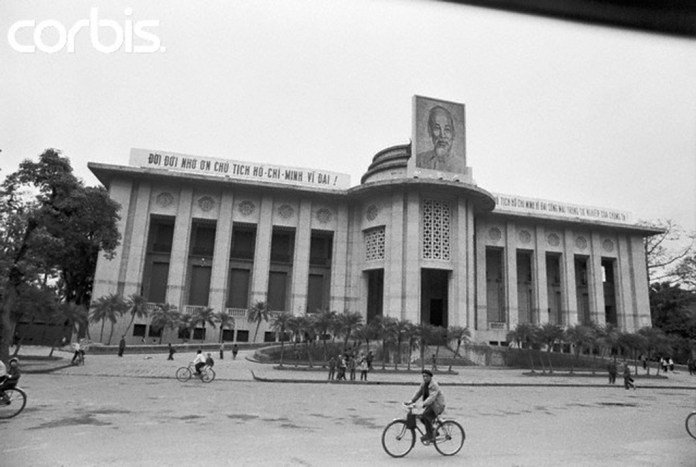
22 Mar 1973, Hanoi, North Vietnam — Hanoi. Looking very similar to the government buildings in its powerful ally to the North, the peoples Republic of China, the main bank building of north Vietnam is topped by a huge photo of Ho Chi Minh. — Image by © Bettmann/CORBIS
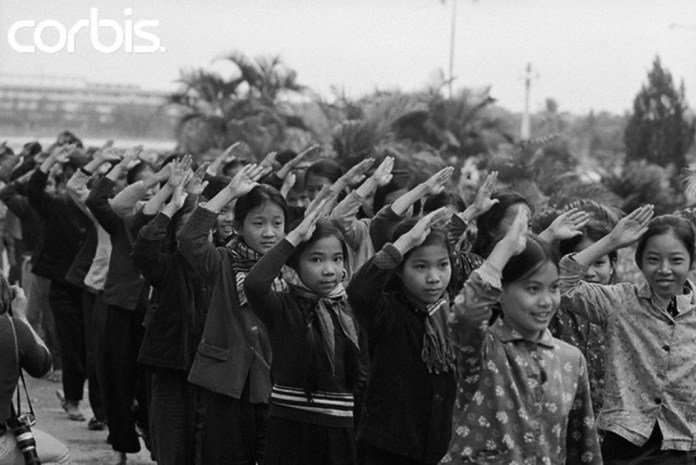
20 Mar 1973, Hanoi, North Vietnam — North Vietnamese School Kids Salute 1973 — Image by © Bettmann/CORBIS
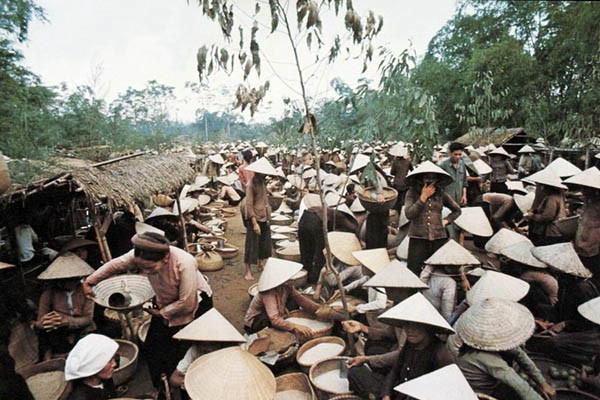
Rice market in northern Vietnam, 1973.
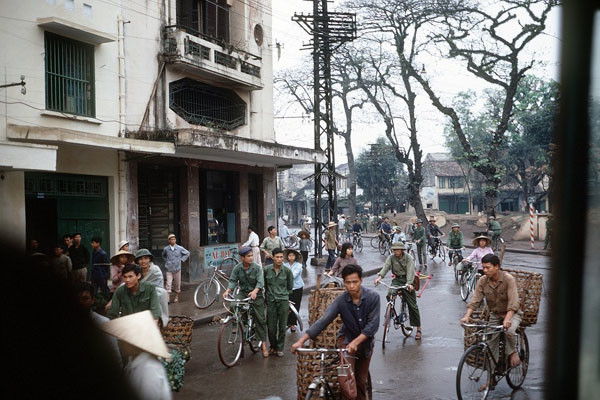
A street scene in central Hanoi, New Year’s Day, 1973. At this time, bicycles were the primary means of transport in the city.
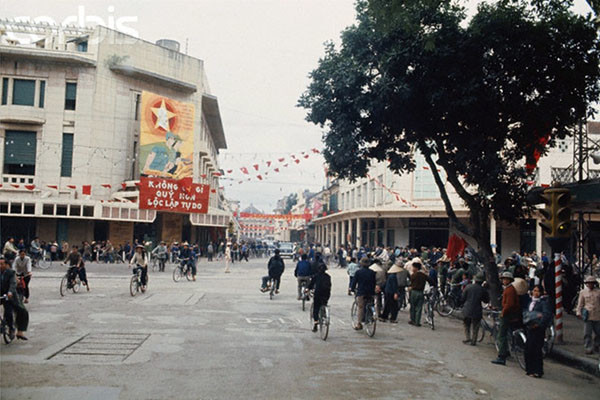
A street scene in central Hanoi, New Year’s Day, 1973. At this time, bicycles were the primary means of transport in the city.
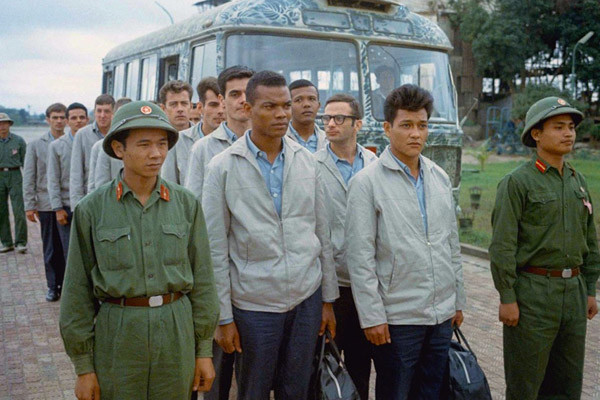
1973. Deliver the American prisoner of war at Gia Lam airport.
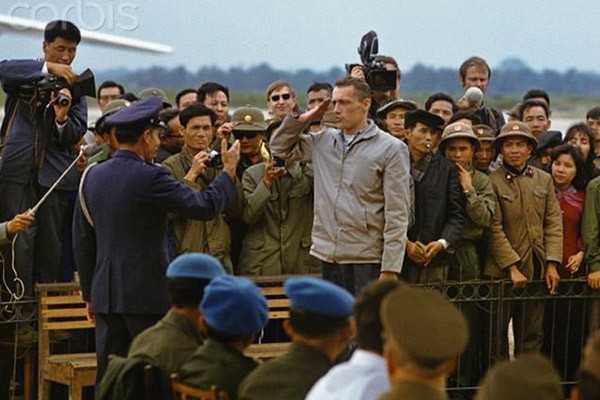
116 American prisoners of war were returned on February 12, 1973.
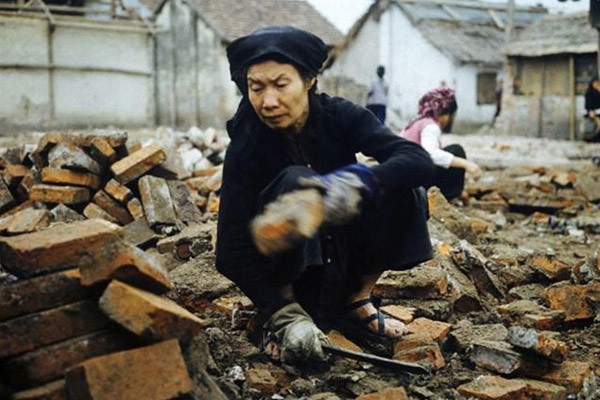
Hanoi 1973 – pick up the brick to rebuild the house at Kham Thien Street. Photo by Werner Schulze
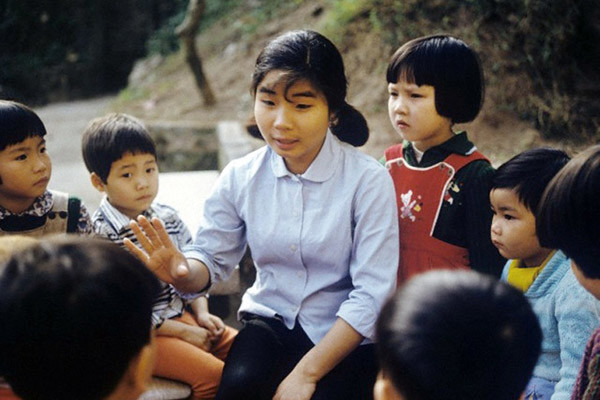
01 Mar 1973, Hanoi, Vietnam — A young Vietnamese kindergarten teacher teaches children to count in a kindergarten near Hanoi in North Vietnam, photographed in March 1973. Photo: Werner Schulze | Location: Nghi Tam, Hanoi, Vietnam. — Image by © Werner Schulze/dpa/Corbis

01 Mar 1973, Hanoi, Vietnam — Vietnamese children laugh and wave at the photographer, photographed in March 1973 in North Vietnam. Only a few weeks before, the peace agreement was signed on the 27th of January in 1973 in Paris and the war against North Vietnam ended. The United States of America flew about 2,000 air attacks on cities and targets in North Vietnam during the “Christmas bombings” in 1972. Photo: Werner Schulze — Image by © Werner Schulze/dpa/Corbis

Kham Thien, Hanoi 1973. Photo: Werner Schulze

01 Mar 1973, Haiphong, Vietnam — A woman and a traumatised girl stand in a landscape of ruins and bomb craters in front of war-destroyed buildings in the harbour city Haiphong in North Vietnam, photographed in March 1973. She wears a white head bandage as a sign for lost relatives. The United States of America flew about 2,000 air attacks on cities and targets in North Vietnam during the “Christmas bombings” in 1972. The peace agreement was signed on the 27th of January in 1973 in Paris. Photo: Werner Schulze — Image by © Werner Schulze/dpa/Corbis
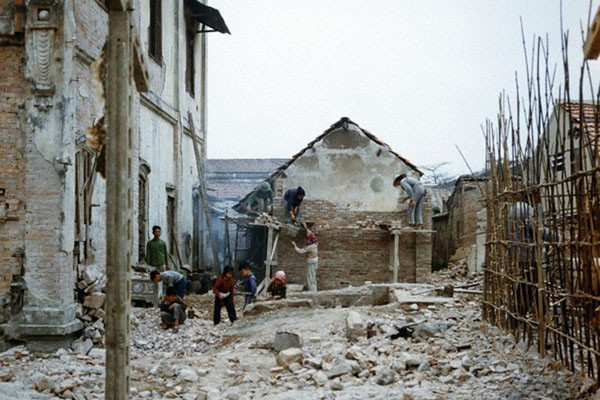
01 Mar 1973, Haiphong, Vietnam — Children help to carry away debris and search for reusable bricks from war-destroyed houses, photographed in March 1973 in the harbour city Haiphong in North Vietnam. The United States of America flew about 2,000 air attacks on cities and targets in North Vietnam during the “Christmas bombings” in 1972. The peace agreement was signed on the 27th of January in 1973 in Paris. Photo: Werner Schulze — Image by © Werner Schulze/dpa/Corbis
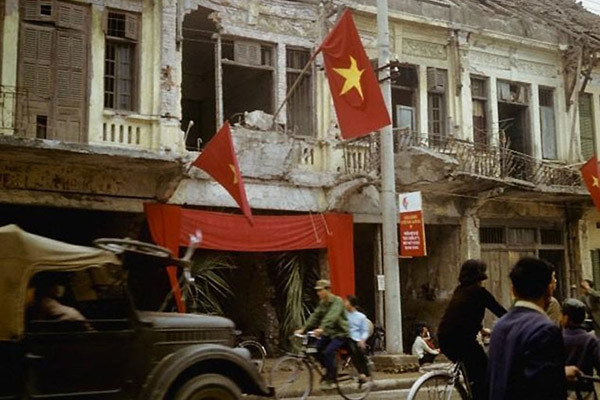
Hanoi, March 1973. Photo: Werner Schulze
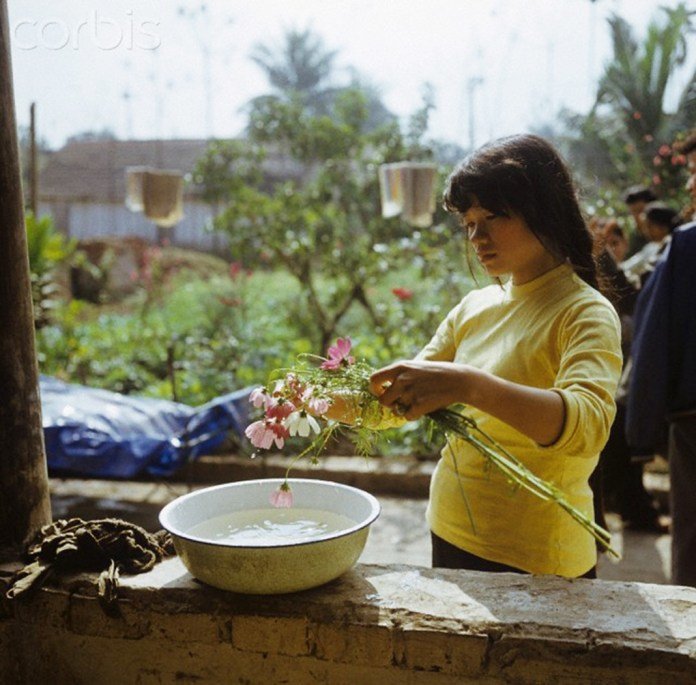
01 Mar 1973, Hanoi, Vietnam — A Vietnamese woman treats flowers in a water bowl, photographed in the flower village Nghi Tam near Hanoi in March 1973. Photo: Werner Schulze | Location: Nghi Tam, Hanoi, Vietnam. — Image by © Werner Schulze/dpa/Corbis
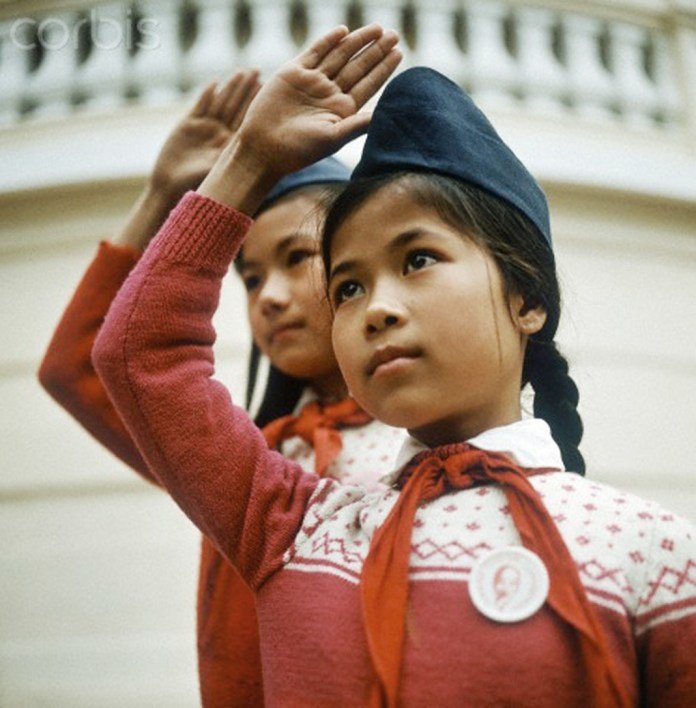
01 Mar 1973, Hanoi, Vietnam — Two Vietnamese girls with cap and red scarf, the hand up for the pioneer greeting, photographed in March 1973 in North Vietnam. Only a few weeks before, the peace agreement was signed on the 27th of January in 1973 in Paris and the war against North Vietnam ended. The United States of America flew about 2,000 air attacks on cities and targets in North Vietnam during the “Christmas bombings” in 1972. Photo: Werner Schulze — Image by © Werner Schulze/dpa/Corbis
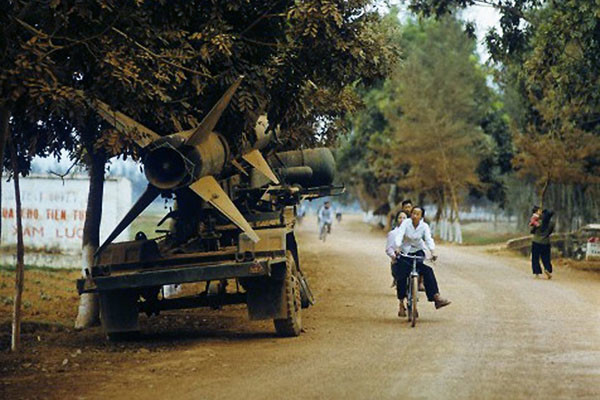
01 Mar 1973, Hanoi, Vietnam — Vietnamese people drive on bicycles past a parked missile at the side of the street in North Vietnam along Street Number 1, photographed in March 1973. Street Number 1, built by the French, as main connection line to South Vietnam with more than 1,500 kilometres lenght was a strategic target in Vietnam War, The United States of America flew about 2,000 air attacks on cities and targets in North Vietnam during the “Christmas bombings” in 1972. The peace agreement was signed on the 27th of January in 1973 in Paris. Photo: Werner Schulze — Image by © Werner Schulze/dpa/Corbis

Hà Nội tháng Ba, năm 1973. Sửa chữa cầu Long Biên.
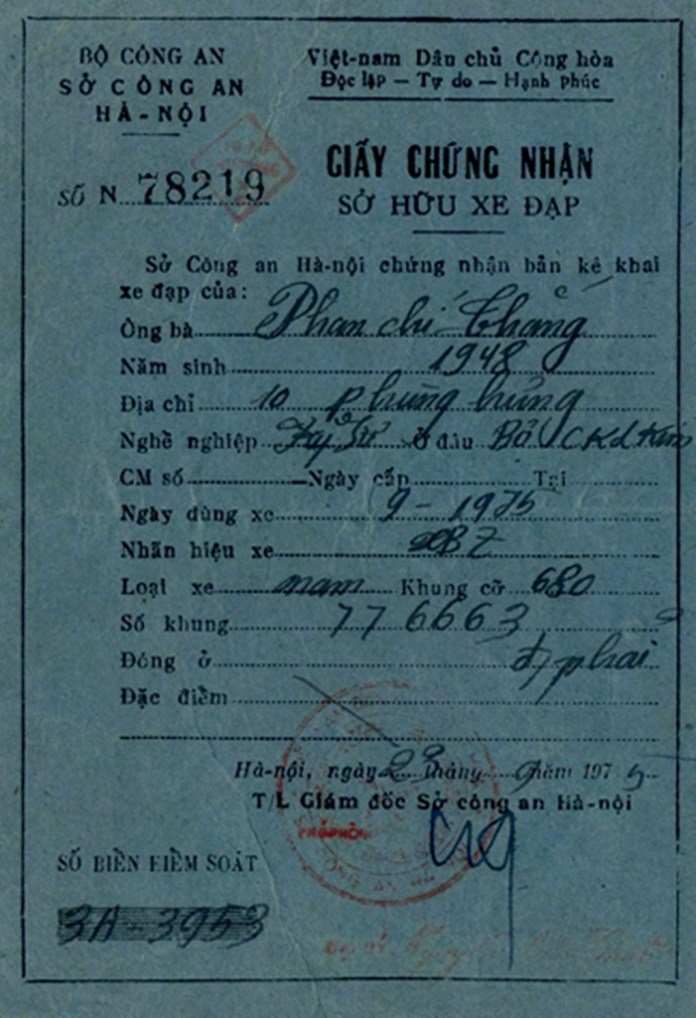
A dozen years ago, many gold-worthy bicycles were issued with a certificate of ownership, number plates, and kept as treasures in the house.
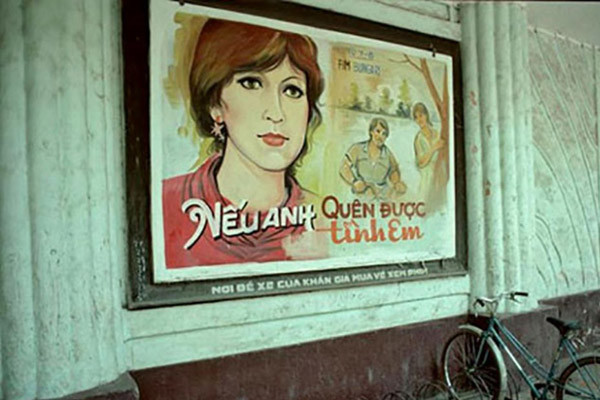
A Thong Nhat bicycle was carefully locked outside of a cinema
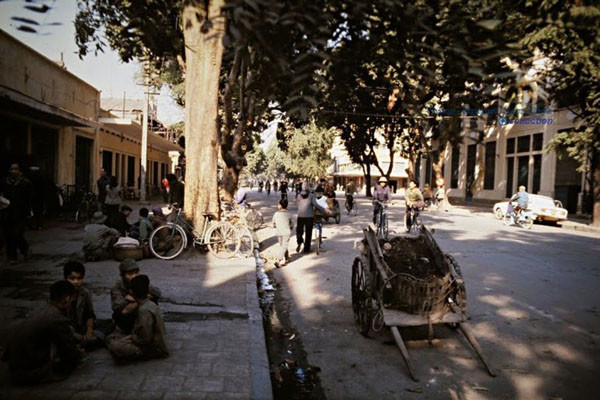
Ngo Quyen Street, Hanoi 1975. This is also the year of war against the United States completely ended with the total attack of spring 30/04/1075.

bicycle registration number plate

Hanoi 1975
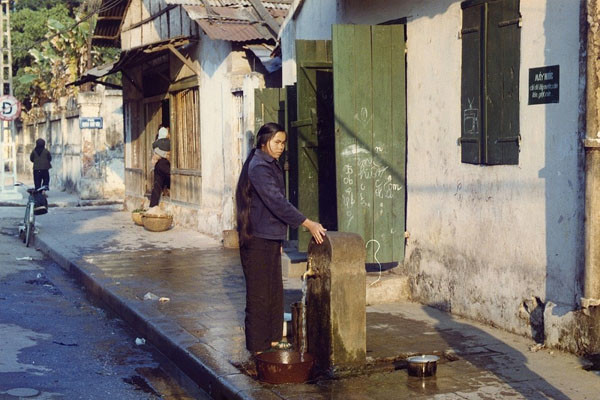
Hanoi 1975
Above are rare pictures of Hanoi in time of American war. We will continue in the third part with picture of Hanoi after the war till 1990s

